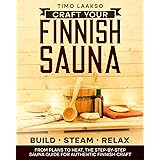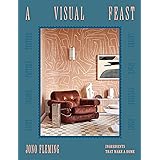Unleash Your Inner Designer: Master the Art of Thrift Flip and DIY Clothing Transformation
Ever wish you could refresh your wardrobe, express your unique style, and save money all at once? The world of DIY clothing transformation, often called a “thrift flip,” offers an exciting answer! In the video above, Jennifer from JENerationDIY takes us on a creative journey, showcasing three fantastic ways to turn pre-loved garments into trendy, custom pieces. She proves that with a little imagination and some basic tools, anyone can become a fashion alchemist, transforming drab into fab.
Thrift flipping isn’t just about saving money; it’s a powerful statement of personal style and sustainability. Instead of buying new, you’re giving forgotten clothes a second life, reducing waste, and creating something truly one-of-a-kind. Jennifer’s projects are perfect for beginners, demonstrating practical techniques with a lighthearted, encouraging approach. So, let’s dive deeper into these brilliant ideas and equip you with even more insights to start your own upcycling clothes adventure!
Project 1: The Rainbow Stripe Tee – A Pop of Personalized Color
Who doesn’t love a classic white t-shirt? It’s the ultimate blank canvas, and Jennifer’s transformation of a plain Gildan tee into a vibrant, Brandy Melville-inspired striped top is pure genius. This project primarily uses fabric paint, making it accessible even if you’re new to sewing.
Mastering Fabric Paint for Custom Apparel
When working with fabric paint, selecting the right type is crucial. Jennifer rightly uses fabric paint because, unlike acrylic craft paint, it’s designed to remain flexible and washable after drying and heat-setting. Always check the label for specific instructions regarding drying times and whether heat-setting (often with an iron) is required to make your design permanent. This step is like baking a cake – you need to “set” the ingredients for the final delicious result.
For crisp lines, painter’s tape is your best friend. Jennifer emphasizes pressing down hard on the tape, and for good reason! This creates a strong barrier, preventing the paint from bleeding underneath. Think of it as creating a dam against a river of color. Furthermore, painting *away* from the tape’s edge and *towards* the middle of your stripe helps push any excess paint into the desired area, rather than forcing it under the tape. This simple trick is a cornerstone of achieving professional-looking lines.
Jennifer’s choice of red, yellow, and blue stripes for Pride Month adds a wonderful personal touch. However, the possibilities for stripes are endless. Consider experimenting with different color palettes—monochromatic shades for a subtle look, complementary colors for high contrast, or even a gradient effect. The 1 centimeter spacing between her tape strips provides a neat and balanced look, but varying widths can also create dynamic visual interest.
Project 2: The Zippered Turtleneck – Adding Edge and Versatility
Jennifer’s transformation of a somewhat “nun-like” turtleneck into a chic, zippered statement piece is a fantastic example of how a single detail can redefine a garment. The added zipper instantly elevates the shirt, offering a blend of modern style and functionality.
Seamlessly Integrating Zippers and No-Sew Alternatives
Finding the perfect zipper can sometimes be a challenge, as Jennifer discovered when she had to opt for a navy blue zipper with gold accents instead of white. This experience highlights a key aspect of creative fashion: improvisation. Don’t be afraid to embrace unexpected combinations; sometimes, a contrasting zipper color or metallic finish can become a focal point, turning a potential mishap into a unique design feature. It’s like finding a quirky antique that perfectly complements a modern room.
For those hesitant about sewing, fabric glue and E6000 glue are excellent allies. Fabric glue, designed specifically for textiles, offers a strong, flexible bond. E6000, a multi-purpose adhesive, is incredibly durable and works well on various materials, including fabric, as Jennifer found for her zipper stopper. When applying glue, remember that less is often more. A thin, even line is usually sufficient to create a strong bond without making the fabric stiff or creating visible bumps. Allow ample drying time, which can sometimes be several hours or even overnight, for the glue to fully cure and hold securely.
Jennifer’s struggle with creating a zipper stopper with fabric glue and then successfully using E6000 is a valuable lesson. It shows that not every DIY attempt will work perfectly the first time, and it’s okay to pivot to a different solution. For a more robust zipper stopper, you could also hand-stitch a small piece of fabric at the bottom, or even use specialized metal zipper stops available at craft stores. The gold ring she adds to the zipper pull is a clever detail, transforming a functional element into a stylish embellishment. This kind of thoughtful accessorizing can make a simple clothing alteration feel truly bespoke.
Project 3: The Bodycon Dress to Two-Piece Set – Maximal Impact, Minimal Effort
Perhaps the most ambitious yet rewarding project in the video is transforming a single bodycon dress into a stylish two-piece off-the-shoulder top and matching skirt. This showcases the true potential of refashioning garments, giving you two versatile pieces for the price of one!
Crafting a Chic Off-the-Shoulder Top with a Lettuce Hem
Converting a full dress into a two-piece set requires careful cutting. Jennifer’s advice to try on the dress first to determine the ideal cut points for the top and skirt is essential. When cutting knit fabrics, always leave a bit of extra material for hemming, as knits can stretch and fray. Think of it as leaving a safety margin, just in case. Cutting off the shoulder portion and the original arm hems provides the raw edges needed for the trendy “lettuce hem.”
The lettuce hem technique, though it sounds fancy, is quite beginner-friendly once you understand the sewing machine settings. Jennifer details setting your machine to a “pretty wide zigzag” stitch with a “pretty big distance between stitches.” This combination, coupled with stretching the fabric as you sew, is the magic formula. The wide zigzag allows the stitch to wrap around the stretched edge, and the tension created when the fabric relaxes forms the distinctive wavy, “lettuce” effect. Imagine a rubber band being stretched and then released; the fabric behaves similarly. Riding the middle of the fabric with your needle means one side of the zigzag goes into the fabric, and the other side just barely goes off the edge, allowing for that unique curl. Always, always test your stitch settings on a scrap piece of fabric first – it’s like a dress rehearsal before the main performance!
Creating a Custom-Fit Skirt with an Elastic Waistband
Achieving a perfect fit for the skirt, especially after taking it in, is paramount. Jennifer’s method of trying it on and marking with an eyeliner pencil (a non-professional but effective tool!) is a smart approach for beginners. After sewing a straight line down the marked area, trimming the excess fabric ensures a clean finish. This process makes the skirt truly your own, fitting your body like a glove.
Adding an elastic waistband can seem daunting, but Jennifer breaks it down clearly. The trick lies in ensuring the elastic and the fabric match up when sewn. By folding the elastic in half and then stretching the skirt fabric to match those points, you create visual cues for where to stretch the elastic as you sew. This equal distribution of stretch is critical for a comfortable and evenly gathered waistband. A zigzag stitch is ideal for attaching elastic because it allows the fabric to stretch without breaking the threads, unlike a straight stitch which would snap.
Securing the waistband after it’s sewn in is a clever step often overlooked by beginners. By stitching a straight line along the side seams, where stitches are less visible, you prevent the elastic from flipping or rolling inside the casing. This ensures your waistband stays put and looks neat while wearing, making your handmade skirt feel much more professional.
Embark on Your Own Thrift Flip Journey!
As Jennifer demonstrates, the joy of DIY clothing transformation comes not just from the finished product, but from the creative process itself. Whether you’re painting stripes on a tee, adding a zipper to a turtleneck, or completely refashioning a dress into a two-piece set, each project is an opportunity to learn, experiment, and express yourself. Don’t be intimidated by the tools or techniques; remember that every expert started as a beginner. With patience and a willingness to try new things, you’ll soon be looking at every thrift store find as a treasure trove of potential.
The beauty of upcycling clothes lies in its endless possibilities. Consider experimenting with fabric dyeing, adding embroidery patches, or even combining elements from multiple garments. The most important thing is to have fun, embrace imperfections, and celebrate your unique style. So, grab some thrifted items, cue up Jennifer’s video again for inspiration, and start your own incredible journey of creative thrift flip and personalized fashion!







